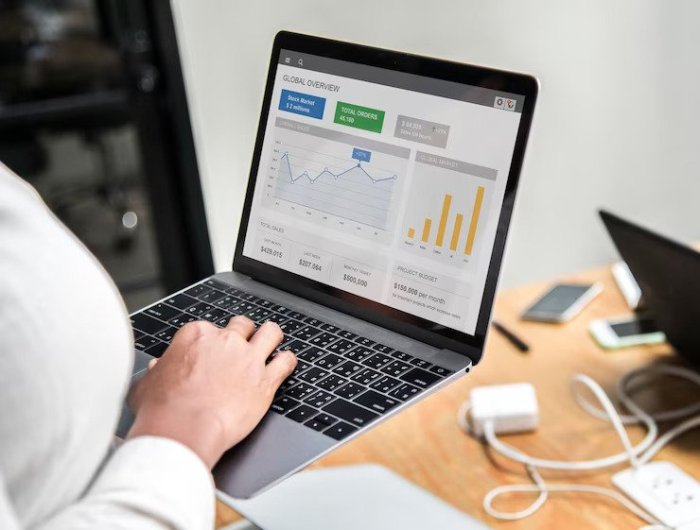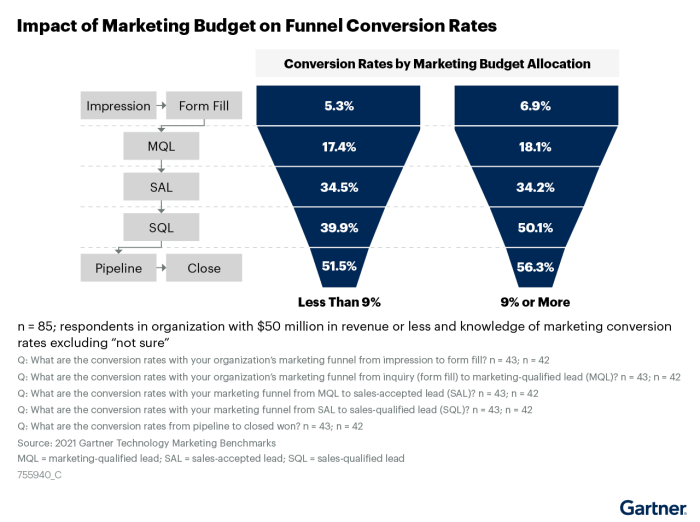Website Conversion Rates play a crucial role in determining the success of businesses online. From understanding the basics to implementing effective strategies, let’s dive into the world of maximizing your conversion rates.
As businesses strive to make their online presence stand out, the significance of website conversion rates cannot be underestimated.
Understanding Website Conversion Rates
Website conversion rates are like the cool kids at school – they tell you how many visitors to your site actually take action, whether it’s making a purchase, signing up for a newsletter, or filling out a contact form. Basically, they show you how effective your website is at turning visitors into customers or leads. It’s like getting an A+ on your report card in the business world.
Calculating Website Conversion Rates
When it comes to crunching the numbers, website conversion rates are calculated by dividing the number of conversions by the total number of visitors to your site, and then multiplying by 100 to get a percentage. Different industries have different average conversion rates because, well, not all industries are created equal. For example, the fashion industry might have a higher conversion rate than the travel industry because buying clothes online is a bit easier than booking a vacation.
Examples of Conversion Rates
- A high website conversion rate could be like hitting a home run in baseball – think 5% or higher. This means that 5 out of every 100 visitors to your site are taking action, which is pretty impressive and can lead to some serious business growth.
- On the flip side, a low website conversion rate is like striking out – anything below 2% is considered poor. Imagine only 2 out of every 100 visitors actually doing something on your site – not exactly a winning formula for success.
Factors Influencing Website Conversion Rates

When it comes to website conversion rates, there are several key factors that can significantly influence the success of a website. Factors such as website design, user experience, and call-to-action buttons play a crucial role in determining whether visitors will convert into customers or leads.Website design is one of the first things that visitors notice when they land on a website.
A clean and visually appealing design can help create a positive first impression and encourage visitors to explore further. On the other hand, a cluttered or outdated design can turn visitors away and negatively impact conversion rates.User experience is another important factor that can influence website conversion rates. A website that is easy to navigate, loads quickly, and provides valuable information to visitors is more likely to convert them into customers.
Factors such as website speed, mobile responsiveness, and content quality all contribute to the overall user experience.Call-to-action buttons are essential for guiding visitors towards taking a desired action, whether it’s making a purchase, signing up for a newsletter, or requesting more information. Clear and compelling call-to-action buttons can help improve conversion rates by making it easy for visitors to take the next step.Successful websites that have optimized these factors include e-commerce giants like Amazon and online service providers like Airbnb.
These websites have invested in user-friendly designs, fast loading times, and high-quality content to ensure a positive user experience and maximize conversion rates.
Strategies to Improve Website Conversion Rates
When it comes to boosting website conversion rates, businesses need to implement various strategies to attract and engage their target audience effectively. By focusing on A/B testing, personalized content, and landing page optimization, companies can make significant improvements in their conversion rates.
The Importance of A/B Testing
A/B testing plays a crucial role in understanding what resonates best with your audience. By testing different variations of elements on your website, such as headlines, call-to-action buttons, or images, you can identify which ones drive more conversions. This data-driven approach helps in making informed decisions to optimize your website for better performance.
Utilizing Personalized Content
Personalization is key to engaging visitors and increasing conversion rates. By tailoring content based on user behavior, preferences, and demographics, businesses can create a more personalized experience for their audience. This can lead to higher engagement, increased trust, and ultimately, more conversions.
Landing Page Optimization
Optimizing your landing pages is crucial for driving conversions. By ensuring that your landing pages are clear, concise, and relevant to the user’s intent, you can increase the chances of visitors taking the desired action. From compelling copy to visually appealing design, every element on your landing page should be optimized for conversion.
Success Stories in Boosting Conversion Rates
Several businesses have successfully increased their conversion rates by implementing strategic changes. For example, Company X saw a 30% increase in conversions after revamping their landing page design based on user feedback. Similarly, Company Y achieved a 25% increase in conversions by personalizing their email campaigns to target specific customer segments.
Tools and Metrics for Monitoring Website Conversion Rates

In the digital world, monitoring website conversion rates is crucial for businesses to understand how effective their online presence is in converting visitors into customers. By utilizing various tools and metrics, businesses can gain valuable insights into user behavior and make data-driven decisions to improve conversion rates.
Significance of Metrics in Understanding User Behavior, Website Conversion Rates
- Bounce Rate: This metric measures the percentage of visitors who navigate away from the site after viewing only one page. A high bounce rate may indicate that the landing page is not engaging enough or relevant to visitors.
- Click-Through Rate (CTR): CTR measures the percentage of users who click on a specific link, ad, or call-to-action on a webpage. A high CTR indicates that the content is compelling and relevant to users.
- Conversion Funnels: Conversion funnels track the steps users take from entering the site to completing a desired action, such as making a purchase. By analyzing the conversion funnel, businesses can identify any bottlenecks or drop-off points in the user journey.
Recommendations for Leveraging Tools and Metrics
- Use Google Analytics: Google Analytics is a powerful tool that provides detailed insights into website traffic, user behavior, and conversion rates. Businesses can track metrics like bounce rate, CTR, and conversion funnels to optimize their online performance.
- A/B Testing: Conducting A/B tests allows businesses to compare different versions of a webpage to determine which one performs better in terms of conversion rates. By testing elements like headlines, images, and call-to-action buttons, businesses can identify the most effective strategies for increasing conversions.
- Heatmaps: Heatmap tools like Hotjar or Crazy Egg visually represent user interactions on a webpage, showing where users click, scroll, or spend the most time. By analyzing heatmaps, businesses can optimize website layouts and content to improve user engagement and conversion rates.





